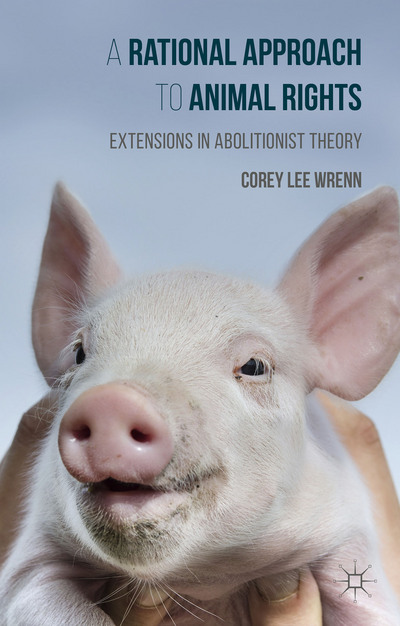Effective persuasion necessitates that activists carefully direct desired behavior change. For vegans, what this means is that telling people to “Go Vegan!” is not sufficient, because it is not self-evident what going vegan entails. Veganism still appears a daunting task to most.
There are many reasons for this. First, veganism is still deviant and statistically uncommon in the West, and mainstream media represents it negatively (Cole and Morgan 2011). Second, professionalized animal welfare organizations (such as Vegan Outreach) dedicate a significant portion of their efforts painting veganism as difficult and unrealistic. As a result, individuals are getting negative messages about veganism from both sides, making the transition to veganism a confusing one and persuasion unlikely.
Simply demanding people go vegan is not enough, but scripting veganism can definitely improve results. According to social psychological research, the critical moves of behavior change should be clearly laid out and unambiguous (Heath and Heath 2010). The many changes necessitated to go vegan should be broken down into small changes so that it does not appear daunting and undermine motivation.
Meatless Mondays and vegetarianism are not recommended for inclusion in vegan scripts. The key is to script one big change into smaller changes, and this does not necessitate compromising ethics. It is common for professionalized nonprofits to employ flexitarian models with the justification that small steps are necessary, however, these organizations rarely promote veganism as an end goal. Their decision to promote small changes is based on their requirement to secure large grants and donations from elites, many of whom are threatened by veganism or anti-speciesism.
Activists can employ scripting to promote veganism without having to compromise. Consider the following script, which assumes moderate levels of accessibility. This would need to be tailored to low-income communities, cultural enclaves, or communities living in food deserts. Scripting should be tailored to suit the socioeconomic status and structural opportunities available to a given audience.
- State clearly to your family and friends you that you will be going vegan. Making a clear commitment will motivate and sustain your decision. It will also alert your support system, encouraging them to be respectful and helpful.
- Buy or borrow a few books on vegan ethics, vegan health, and vegan cooking.
- Locate a list of common animal ingredients to avoid and keep it handy.
- If you have a smartphone, download vegan apps to help with ingredient checking.
- Remove all nonvegan food items (flesh, milk, eggs, cheese, butter, honey, and all processed foods that contain these ingredients or other ingredients like gelatin, whey, datum, etc.) from your home and workstation.
- Create a grocery list and replace pantry with staples (use beginner’s vegan cookbooks to guide this process). Consider buying vegan analogs like veggie burgers to ease the transition. They are especially useful for busy lifestyles or for people with limited cooking skills.
- Get familiar with vegan fast food options in your area for times when you don’t have time to cook (websites and smartphone apps are available to help with this). While you’re at it, look up vegan-catering restaurants and natural grocers in your area. Keep your pantry stocked with vegan snacks for times when you’re in a rush.
- Devise a plan for parties, holiday dinners, and other social gatherings that are not likely to have vegan options (bring your own food or make a special request ahead of time, the same goes for air travel).
- Purchase new shoes, belts, jackets, and wallets to replace any nonvegan items you may have that are made of leather, wool, silk, fur, down, or suede (hard to find items can be found in online vegan shops).
- Replace your soap, shampoo, toothpaste, laundry detergent, cleaning supplies, and other bath and body products with vegan alternatives.
- Join a local vegan group and/or an online community for support.
- Subscribe to some vegan food blogs for inspiration.
- Try one new vegan recipe each week.
- Purchase a vegan multivitamin (with B12), vegan Vitamin D3, and vegan Omega-3s (all available from natural grocers, online vegan stores, or online discount vitamin suppliers)
- Donate or trash any remaining products made from nonhuman animal products.
For those with the means to do so, this list can be tackled in a few days. For others who might be overwhelmed with the transition or who may have limited income, this script can be staggered over a few weeks or months.
For the Vegan Toolkit
- Provide very clear steps for going vegan
- Make sure steps towards veganism are manageable
- Tailor script for each community
References
Cole, M. and K. Morgan. 2011. “Vegaphobia: Derogatory Discourses of Veganism and the Reproduction of Speciesism in UK National Newspapers.” The British Journal of Sociology 62 (1): 134-153.
Heath, C. and D. Heath. 2010. Switch: How to Change Things When Change is Hard. New York, NY: Broadway Books.
This essay was originally published with The Examiner in 2012.

Readers can learn more about the social psychology of veganism in my 2016 publication, A Rational Approach to Animal Rights. Receive research updates straight to your inbox by subscribing to my newsletter.
